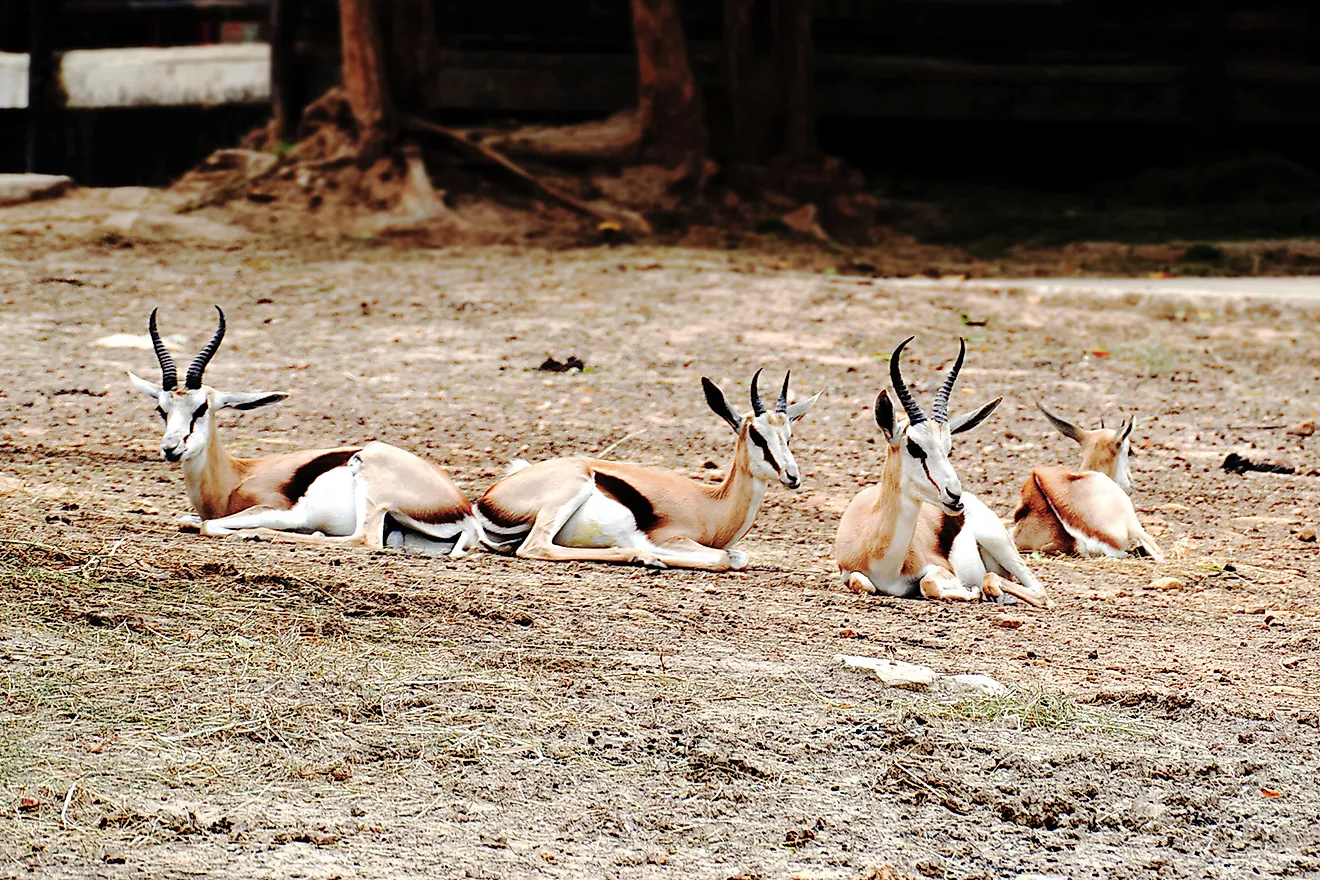Unique Species Of Africa: The Dibatag

Dibatag, also known as Clark gazelle, is a rare member of the gazelle family with a slender body, long legs, and a long thin neck. The body structure resembles that of gerenuk, but the two animals are quite different, even though they exist in the same geographic and habitat area and frequently interact. Dibatags are found mainly in Ethiopia particularly in the region of Ogaden and adjacent areas of central and northern Somali. The Dibatag inhabit semi-arid areas with dense to scattered thorn bush and plains with thicket or grassland. Habitat degradation, overhunting, armed conflicts, and droughts are some of the threats to the survival of the species.
Description
The body length of Dibatag is within the range of 41-46 inches while the height ranges from 31-35 inches. The weight of a male Dibatag ranges from 44-77 pounds and that of the female ranges from 49-64 pounds. The head of the gazelle is small, flat, pointed, and wedge-shaped. It has large eyes and medium-sized ears. The mouth is small with the upper lip a bit longer. The length of the curved horn which is only found in males is within the range of 3.9 - 9.8 inches. The Dibatag has a brown, grayish color with ochre-like limbs and the under part, the cheek, and the rump have white stripes. The tail is black which is always held up during flight. The male and female Dibatag are quite distinct. The female tends to be smaller and hornless. The Dibatag has a typical lifespan of 10-12 years.
Behavior
Dibatag is a diurnal animal which likes to graze in areas with waterless thornbush and consumes buds, leaves of evergreen trees, shoots and any green foliage. The animal at times stands on their hind legs while they support themselves with their forelimbs on the trees as browse. Dibatag can be a solitary animal or move in small herds of related animals. The males mark their territory with urine, feces, and secretion from the preorbital gland and defend their territory by sparring on any male which threatens to invade. The Dibatag is very alert and elusive animal. When they sense danger, they will hide and stand still behind the vegetation. It will take off in a slow and relaxed manner with the head held up and tail erect when fleeing from predators. The animal will gallop only when in real danger.
Reproduction
The reproductive maturity age of both male and female Dibatag ranges from 12–18 months. The Dibatag, like other bovid species, are polygynous. During the mating season, the males mark their territories with urine, feces, and secretion from preorbital gland to warn off other males. The mating in Dibatag occurs in April and May and birth in October and November. The Dibatag has a gestation period roughly seven months, and the female gives birth to a single offspring.
Conservation
The population of the Dibatag in various habitats has been declining at an alarming rate over the years. Based on 1959 field data the population size of Dibatag was estimated at 12,000 individuals. After thirty years the population of the animals was estimated at only 4,000 individuals in Ethiopia while in Somali the number is still unknown. At this rate, Dibatag is an endangered species. The situation is attributed to habitat degradation through overgrazing, overhunting, drought, and political conflicts. At the moment there are no protected areas within the rangelands, and no Dibatag is held in captivity for protection purposes. Concerted efforts should be made to initiate conservation measures in rangelands, and mitigation measures against those factors affecting the species negatively are initiated.











